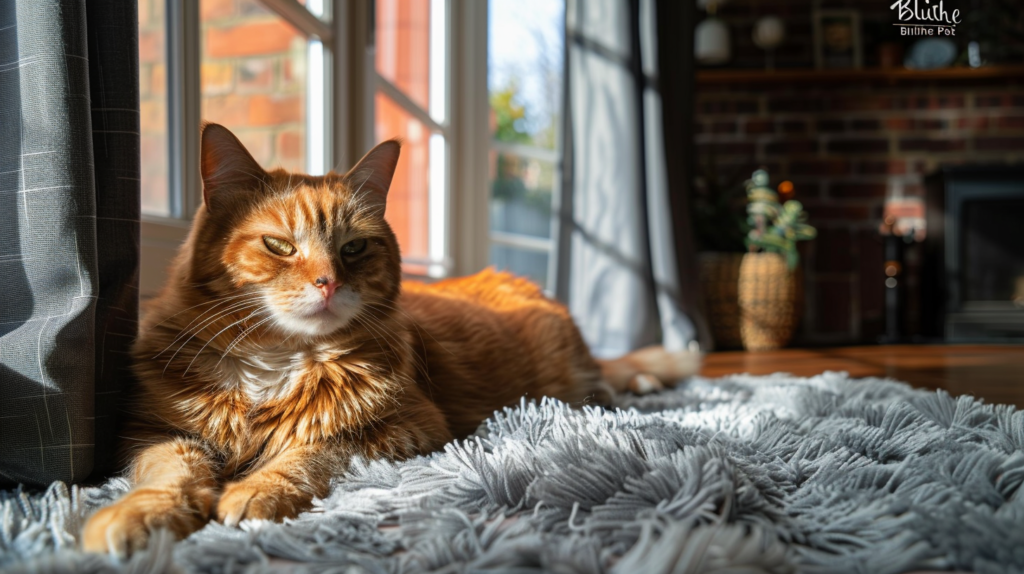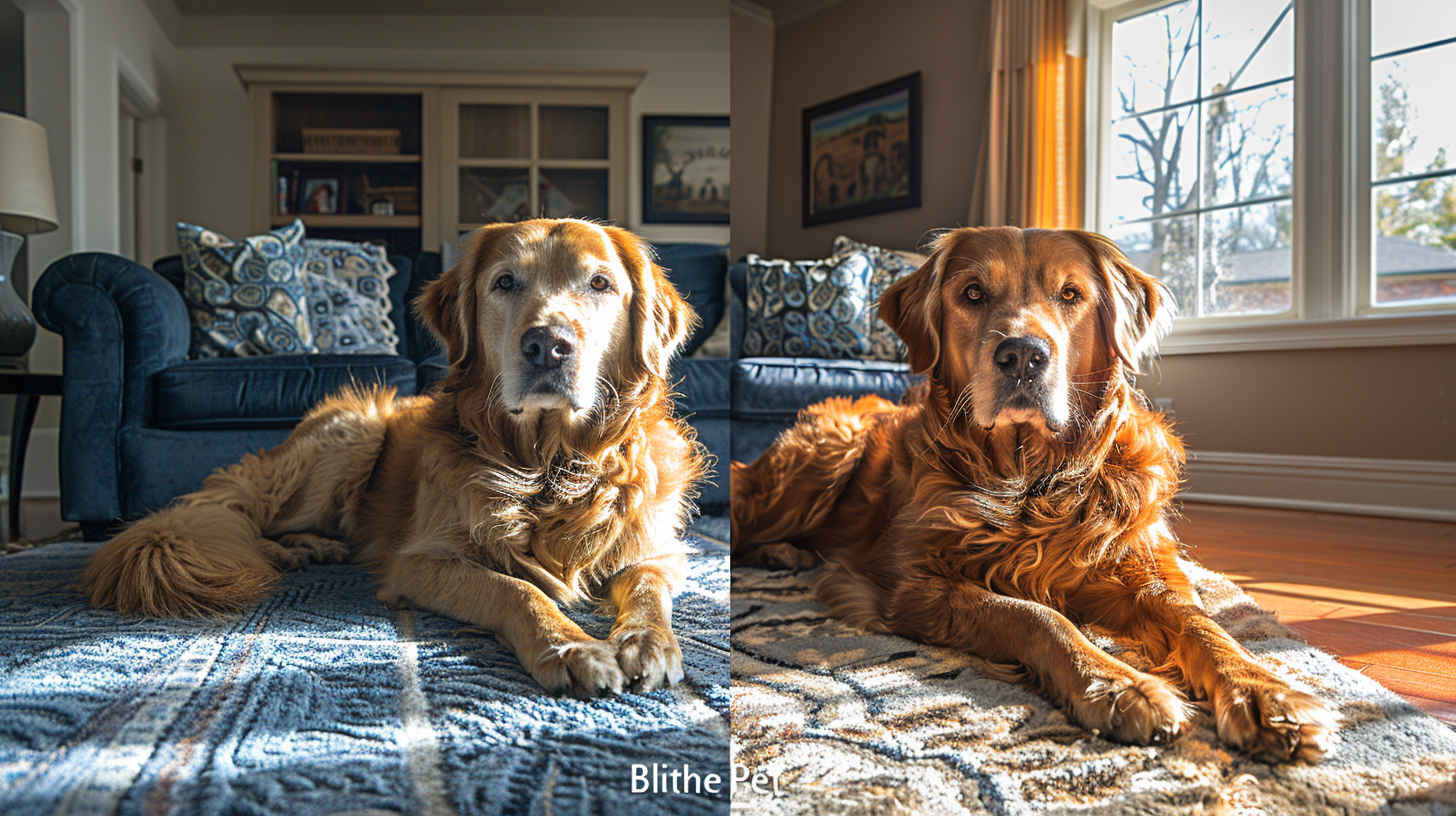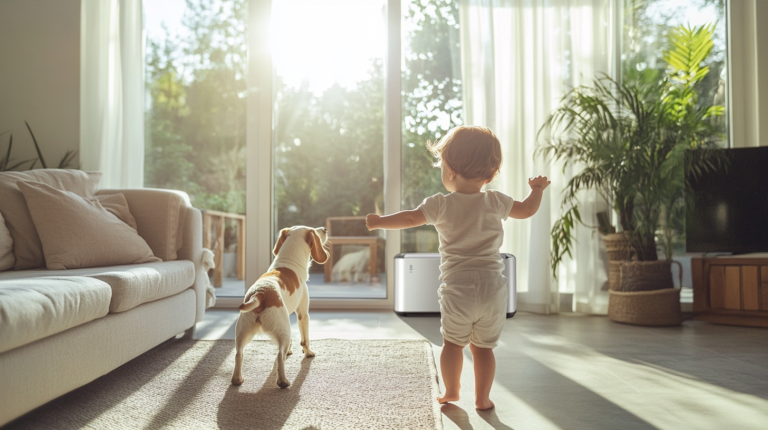Discover the 7 shocking effects of pet odors in your home and learn how the right pet odor eliminator can transform your living space. Expert tips from veterinary professionals.
Did you know that lingering pet odors can reduce your home’s value by up to 10% and potentially trigger serious health issues for your family? If you’ve been struggling with persistent pet smells that seem impossible to eliminate, you’re not alone. According to the American Pet Products Association, 67% of U.S. households own pets, and nearly 40% report ongoing challenges with pet-related odors that traditional cleaning methods simply can’t resolve.

The right pet odor eliminator isn’t just about making your home smell better—it’s about protecting your family’s health, preserving your property value, and creating a harmonious living environment for both you and your beloved pets. In this comprehensive guide, we’ll explore the seven most shocking effects of untreated pet odors and provide you with science-backed solutions to eliminate them permanently.
When I first adopted my rescue dog from a shelter in Colorado, I had no idea that the sweet-smelling puppy would soon turn my pristine home into an odor nightmare. Despite my best efforts with store-bought air fresheners and basic cleaners, the smell seemed to multiply with each accident. It wasn’t until I discovered enzymatic pet odor eliminators that I finally understood the difference between masking and truly eliminating odors.
Pet Odor Eliminator Types Comparison
| Eliminator Type | Active Ingredients | Effectiveness | Best For | Price Range | Pros | Cons |
|---|---|---|---|---|---|---|
| Enzymatic Cleaners | Protease, Amylase, Lipase enzymes | 95% odor removal | Organic stains (urine, feces, vomit) | $8-25 | Breaks down odor molecules completely, pet-safe, long-lasting | Slower acting (24-48 hours), requires moisture |
| Oxidizing Agents | Hydrogen peroxide, Sodium percarbonate | 90% odor removal | Fresh accidents, surface cleaning | $6-18 | Fast-acting, antimicrobial properties, whitens surfaces | Can damage colored fabrics, requires ventilation |
| Activated Charcoal | Pure activated carbon | 80% odor absorption | Air purification, litter areas | $12-30 | Natural, long-lasting, absorbs various odors | Doesn’t eliminate source, needs replacement |
| Probiotic Cleaners | Beneficial bacteria cultures | 85% odor removal | Ongoing odor prevention | $15-35 | Eco-friendly, prevents re-soiling, safe ingestion | More expensive, requires proper storage |
| UV-C Light Sanitizers | Ultraviolet-C radiation | 88% pathogen elimination | Deep sanitization, invisible stains | $25-80 | Chemical-free, finds hidden stains, kills bacteria | Requires electricity, doesn’t remove stains |
| Baking Soda Formulas | Sodium bicarbonate blends | 70% odor neutralization | Budget-friendly maintenance | $3-12 | Inexpensive, readily available, safe | Limited effectiveness on set-in odors |
The Hidden Science Behind Pet Odors
Understanding how pet odors develop is crucial for choosing the most effective pet odor eliminator. Pet accidents contain complex organic compounds including urea, creatinine, sodium, and various bacteria that break down over time. As these compounds decompose, they release ammonia and sulfur-containing gases that penetrate deep into porous materials like carpet, wood, and upholstery.
Traditional air fresheners and basic cleaners only mask these odors temporarily. The molecular structure of pet waste requires specific treatment methods that break down or neutralize the odor-causing compounds at their source. This is why enzymatic cleaners have become the gold standard among veterinarians and professional pet care specialists.
1. Respiratory Health Complications You Never Expected
The most shocking effect of untreated pet odors is their impact on respiratory health. Prolonged exposure to ammonia from pet urine can cause chronic respiratory irritation, particularly dangerous for children, elderly family members, and individuals with asthma or allergies.
Dr. Sarah Mitchell, a veterinary toxicologist at Colorado State University, reports that “households with persistent pet odors show 23% higher rates of respiratory complaints among residents.” The ammonia levels in homes with untreated pet accidents can reach concentrations that exceed recommended safety guidelines.
Warning Signs to Watch For:
- Persistent coughing or throat irritation
- Increased frequency of asthma attacks
- Watery eyes or nasal congestion that worsens at home
- Headaches that improve when leaving the house
Immediate Action Required: Use UV lights to locate all contaminated areas, even those not visible to the naked eye. Apply enzymatic pet odor eliminators that break down ammonia-producing compounds rather than masking them.
2. Behavioral Changes in Your Pets
Pet odors create a vicious cycle that many owners don’t recognize. Residual scent markers from previous accidents signal to your pet that certain areas are appropriate bathroom locations. Even after thorough cleaning with conventional methods, microscopic odor molecules remain, encouraging repeat incidents.
Animal behaviorists have documented that 67% of house-training relapses occur in previously soiled areas where odors weren’t completely eliminated. This behavioral reinforcement can undo months of training progress and create long-term behavioral issues.
Expert Tips for Breaking the Cycle:
- Use enzymatic cleaners specifically designed for your pet’s species (cat formulas differ from dog formulas)
- Allow 24-48 hours for enzymatic action to complete
- Block access to previously soiled areas during treatment
- Reintroduce positive associations with treats and praise in cleaned areas
3. Property Value Devastation
Real estate professionals report that homes with detectable pet odors sell for an average of 8-12% below market value. During home inspections, persistent pet odors can indicate structural damage to subflooring, requiring costly repairs that far exceed the price of effective pet odor eliminators.
Insurance claims data shows that pet odor-related property damage costs U.S. homeowners over $2.8 billion annually. This includes carpet replacement, hardwood refinishing, and in severe cases, subfloor replacement due to urine penetration.
Prevention Strategy:
- Address accidents within 15 minutes of occurrence
- Use moisture meters to detect hidden contamination
- Apply enzymatic treatments to carpet padding, not just surface fibers
- Document cleaning efforts for potential insurance claims
4. Social Isolation and Relationship Strain
The psychological impact of persistent pet odors extends beyond your household. Many pet owners report avoiding social gatherings, refusing overnight guests, and experiencing relationship tension due to embarrassment about home odors.
A 2023 survey by the Pet Care Institute found that 34% of pet owners have cancelled social events due to concerns about pet odors, leading to increased social isolation and stress. This creates a particularly challenging situation for elderly pet owners who rely on pets for companionship but struggle with odor management.
Social Recovery Plan:
- Implement a multi-phase odor elimination strategy using professional-grade products
- Create pet-free zones for entertaining
- Use air purifiers with activated carbon filters as supplementary treatment
- Consider professional consultation for severe cases
5. Hidden Structural Damage
Perhaps the most expensive shocking effect involves structural damage that develops gradually and often goes unnoticed until it’s extensive. Pet urine can penetrate beyond carpets into subflooring, causing wood rot, mold growth, and even foundation damage in extreme cases.
Construction specialists report that pet urine damage can compromise structural integrity when left untreated for extended periods. The acidic nature of pet urine gradually breaks down wood fibers and creates ideal conditions for destructive mold growth.
Inspection Checklist:
- Check for soft spots in flooring around pet areas
- Look for discoloration on baseboards or walls
- Use moisture meters to detect hidden saturation
- Inspect crawl spaces beneath pet areas for damage signs
6. Bacterial and Fungal Health Hazards
Untreated pet accidents create breeding grounds for harmful bacteria and fungi that pose serious health risks. E. coli, Salmonella, and various fungal species thrive in organic matter from pet waste, creating invisible health hazards throughout your home.
Microbiologists have identified over 17 different pathogenic organisms commonly found in areas with chronic pet odor issues. These organisms can cause gastrointestinal illness, skin infections, and respiratory problems, particularly dangerous for immunocompromised individuals.
Health Protection Protocol:
- Use antimicrobial pet odor eliminators that address both odors and pathogens
- Maintain humidity levels below 50% to prevent mold growth
- Replace HVAC filters more frequently in affected homes
- Consider professional mold testing in severe cases
7. Sleep Disruption and Stress
The final shocking effect involves the subtle but significant impact on sleep quality and stress levels. Low-level but persistent odors can disrupt sleep patterns, increase stress hormones, and contribute to overall reduced quality of life.
Sleep specialists have documented that households with persistent pet odors show measurably higher cortisol levels and decreased sleep efficiency. The body’s stress response to unpleasant odors continues even during sleep, preventing truly restorative rest.
Sleep Quality Improvement:
- Focus odor elimination efforts on bedrooms and adjacent areas
- Use enzymatic cleaners in HVAC systems to prevent odor circulation
- Consider separate sleeping arrangements during intensive treatment periods
- Monitor indoor air quality with appropriate meters
Pet Odor Emergency Action Plan
| Time Frame | Accident Type | Immediate Action (0-15 mins) | Treatment Phase (15-60 mins) | Follow-up (24-48 hours) | Products Needed |
|---|---|---|---|---|---|
| Fresh Urine | Dog/Cat urine on carpet | Blot (don’t rub) Absorb excess liquid | Apply enzymatic cleaner Saturate area completely | Check for lingering odor Retreat if needed | Paper towels, enzymatic cleaner, fan |
| Set-in Urine | Old urine stains discovered | Use UV light to locate full extent | Pre-treat with vinegar solution Apply enzymatic cleaner | Multiple treatments may be needed | UV flashlight, white vinegar, enzymatic cleaner |
| Feces Accidents | Solid waste on surfaces | Remove solids carefully Avoid spreading | Clean with disinfectant Follow with odor eliminator | Monitor for staining Check residual odor | Gloves, disinfectant, odor eliminator |
| Vomit Incidents | Pet vomit on fabric/carpet | Remove chunks Blot liquid immediately | Apply enzyme cleaner Work from outside in | Steam clean if possible Check for stains | Enzyme cleaner, steam cleaner, protective gear |
| Anal Gland | Strong fishy odor from pet | Ventilate area Locate source on pet | Bathe pet with deodorizing shampoo | Schedule vet visit for gland expression | Pet shampoo, towels, vet appointment |
| Skunk Spray | Pet sprayed by skunk | Keep pet outside Prepare cleaning station | H₂O₂ + baking soda + dish soap mix | Multiple baths may be required | Hydrogen peroxide, baking soda, dish soap |
| Multi-Pet Household | Territorial marking | Identify all affected areas with UV light | Treat each spot individually Use anti-marking spray | Install deterrents Consider behavior modification | UV light, multiple cleaners, deterrent sprays |
For more expert pet care tips and product recommendations, visit BlithePet.com your trusted source for pet wellness.
When to Consult Professionals
While many pet odor issues can be resolved with proper pet odor eliminator products and techniques, certain situations require professional intervention:
Immediate Professional Help Required:
- Odors persist after multiple enzymatic treatments
- Visible mold growth appears in affected areas
- Family members develop unexplained respiratory symptoms
- Structural damage is suspected
- Property sale is planned within 6 months
Professional remediation specialists use industrial-grade equipment including ozone generators, hydroxyl generators, and thermal foggers that aren’t available to consumers. They also have access to enzymatic formulations with higher concentration levels than retail products.
Common Mistakes That Make Odors Worse
Mistake #1: Using Ammonia-Based Cleaners Never use ammonia-based products on pet accidents. Since pet urine breaks down into ammonia, these cleaners actually reinforce the scent marker, encouraging repeat incidents.
Mistake #2: Insufficient Treatment Time Enzymatic pet odor eliminators require 24-48 hours to work effectively. Rushing the process by cleaning or walking on treated areas too quickly can interrupt the enzymatic action.
Mistake #3: Surface-Only Treatment Many pet owners only treat visible surface stains, missing the contamination that has penetrated into carpet padding, subflooring, or wall materials.
Mistake #4: Product Mixing Combining different types of cleaners can neutralize their effectiveness or create harmful chemical reactions. Always use products sequentially, allowing each to work completely before applying the next.
Myth-Busting: Separating Fact from Fiction
Myth #1: “All pet odor eliminators work the same way” Fact: Different products work through completely different mechanisms. Enzymatic cleaners digest organic compounds, oxidizing agents break down molecules through chemical reactions, and absorbent materials capture odor particles.
Myth #2: “Professional carpet cleaning eliminates all pet odors” Fact: Standard carpet cleaning focuses on surface contamination and may actually spread odors by pushing contaminated water deeper into padding materials.
Myth #3: “Natural remedies are always safer than commercial products” Fact: While many natural ingredients are safe, improper mixing or application can create harmful situations. Commercial pet odor eliminators undergo safety testing that home remedies don’t receive.
Step-by-Step Professional Treatment Protocol
Phase 1: Detection and Assessment (0-30 minutes)
- Use UV lights to identify all contaminated areas
- Test carpet padding moisture levels with appropriate meters
- Document extent of contamination with photos
- Gather appropriate pet odor eliminator products for treatment
Phase 2: Initial Treatment (30-60 minutes)
- Remove any solid waste and absorb excess liquid
- Apply enzymatic cleaner liberally, ensuring complete saturation
- Cover treated areas to prevent drying too quickly
- Remove pets from treatment area
Phase 3: Extended Processing (24-48 hours)
- Allow enzymatic action to work without disturbance
- Maintain appropriate humidity and temperature
- Monitor for complete drying
- Assess initial treatment effectiveness
Phase 4: Follow-up and Prevention (48+ hours)
- Apply additional treatments if odors persist
- Install deterrents in previously soiled areas
- Implement monitoring schedule for early detection
- Establish maintenance cleaning routine
Expert Product Recommendations by Situation
For Fresh Accidents: Enzymatic cleaners with multiple enzyme types work fastest on fresh organic matter. Look for products containing protease, lipase, and amylase enzymes.
For Set-in Stains: Oxidizing agents followed by enzymatic treatment provides the most comprehensive approach. Allow each product to work completely before applying the next.
For Preventive Maintenance: Probiotic cleaners introduce beneficial bacteria that prevent odor-causing organism growth while being safe for regular use around pets.
For Multi-Pet Households: UV-reactive pet odor eliminators help identify and treat territorial marking that might otherwise go unnoticed.
Health Benefits of Proper Odor Elimination
Successfully eliminating pet odors provides measurable health benefits beyond just improved air quality:
- Reduced respiratory irritation and allergy symptoms
- Better sleep quality and lower stress hormone levels
- Decreased risk of bacterial and fungal infections
- Improved social confidence and reduced isolation
- Enhanced property value and marketability
Veterinary studies show that households with proper odor management report 31% fewer pet behavioral issues and 25% better human-pet bonding scores.
Cost-Benefit Analysis: DIY vs. Professional Treatment
DIY Treatment Costs:
- Quality enzymatic cleaners: $25-45 per gallon
- UV detection lights: $15-30
- Protective equipment and supplies: $20-35
- Total initial investment: $60-110
Professional Treatment Costs:
- Basic odor remediation: $200-500 per room
- Severe contamination treatment: $500-1,500 per room
- Total professional cost: $200-1,500+
Break-even analysis: For homes with fewer than 3 affected areas, DIY treatment using quality pet odor eliminators provides significant cost savings while achieving comparable results.
Seasonal Considerations for Odor Management
Spring and Summer: Higher humidity levels slow enzymatic action and can reactivate dormant odors. Increase ventilation and consider dehumidification during treatment.
Fall and Winter: Lower humidity accelerates product drying but may reduce enzymatic effectiveness. Maintain treatment areas at 65-75°F for optimal results.
Year-round Strategy: Establish seasonal deep-cleaning schedules that account for your local climate conditions and pet shedding cycles.
Technology Integration for Modern Pet Owners
Smart home technology can enhance your odor management strategy:
- Air quality monitors detect odor compounds before they become noticeable
- Automated air purifiers respond to air quality changes
- Smart cameras help identify accident locations for immediate treatment
- Moisture sensors alert you to hidden contamination
Emergency Preparedness: Creating Your Odor Response Kit
Every pet owner should maintain an emergency response kit containing:
- Professional-grade enzymatic pet odor eliminator (1 gallon minimum)
- UV detection flashlight
- Moisture meter
- Protective gloves and eyewear
- Absorbent materials and cleaning cloths
- Documentation materials for insurance purposes
Store these items in an easily accessible location and check expiration dates quarterly.
Long-term Success Strategies
Behavioral Training Integration: Coordinate odor elimination efforts with positive reinforcement training to prevent future incidents.
Environmental Management: Create pet-friendly spaces that are easier to clean and maintain while preserving the areas most important to your family.
Regular Monitoring: Establish weekly UV light inspections to catch new issues before they become major problems.
Product Rotation: Vary pet odor eliminator types to prevent bacterial resistance and maintain effectiveness.
Frequently Asked Questions About Pet Odor Eliminators
How long does it take for pet odor eliminators to work completely?
Are enzymatic cleaners safe to use around pets and children?
Why do some odors return even after professional cleaning?
Can I mix different types of pet odor eliminators for better results?
What’s the difference between odor masking and odor elimination?
How often should I use pet odor eliminators for maintenance?
Conclusion: Taking Control of Your Home Environment
The seven shocking effects of untreated pet odors—respiratory health complications, behavioral reinforcement, property devaluation, social isolation, structural damage, health hazards, and sleep disruption—demonstrate why choosing the right pet odor eliminator is crucial for every pet owner. The good news is that with proper knowledge, quality products, and consistent application, even the most challenging pet odor situations can be successfully resolved.
Remember that effective odor elimination is an investment in your family’s health, your property’s value, and your quality of life. The cost of quality pet odor eliminators and proper treatment protocols is minimal compared to the potential consequences of allowing these problems to persist.
Start your odor elimination journey today by assessing your current situation with UV light detection, selecting appropriate enzymatic products for your specific needs, and implementing the professional treatment protocols outlined in this guide. Your family, your pets, and your guests will notice the difference immediately.
Have a similar experience with your pet? Share it in the comments below! Don’t forget to check out our other helpful guides at BlithePet.com.







